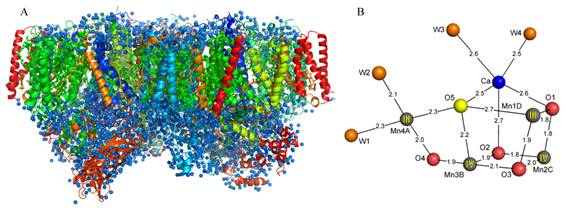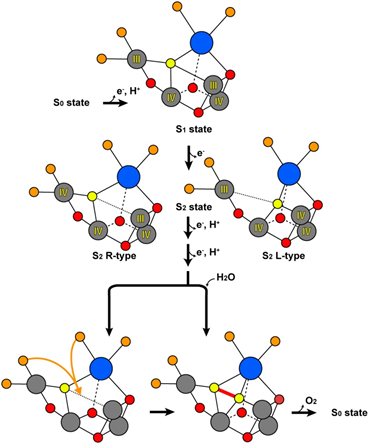Okayama University research: Photosynthesis in plants and new catalysts
December 05, 2014
Source: Okayama University (JAPAN), Center for Public Information
For immediate release: 15 December 2014
Okayama University research: Photosynthesis in plants and new catalysts
(Okayama, 15 December 2014) Researchers at Okayama University have revealed the native structure of Photosystem II by XFEL at SACLA.
Native Structure of Photosystem II Revealed by XFEL at SACLA
Researchers at the Okayama University Graduate School, Department of Natural Science and Technology, in collaboration with a research team at RIKEN Harima Center, have resolved a new crystal structure of photosystem II (PSII). The group used femtosecond pulses from an X-ray free electron laser (XFEL) facility SACLA to obtain a damage-free crystal structure of PSII from the cyanobacterium Thermosynechococcus vulcanus at 1.95-Å resolution (Fig. 1A). The structure could help in the design of artificial catalysts.
The results were published on November 26, 2014 in the journal Nature.
http://www.nature.com/nature/journal/vaop/ncurrent/full/nature13991.html
(DOI:10.1038/nature13991)
The structure of PSII—a huge membrane protein complex in plants and other photosynthetic organisms that catalyzes the oxidation of water during photosynthesis—has previously been solved using synchrotron radiation X-ray diffraction by Jian-Ren Shen and his colleagues. This was selected as one of the runners up for the Breakthroughs of the Year 2011 by the journal Science. But the synchrotron radiation X-rays previously used are thought to damage the Mn4CaO5 cluster that is the catalytic heart of PSII (Fig. 1B). M. Suga, F. Akita and other colleagues in the group led by Jian-Ren Shen of Okayama University, in collaboration with a team led by Masaki Yamamoto and Hideo Ago of RIKEN Harima Center, used XFEL to solve the structure. The femtosecond X-ray pulses provided by XFEL are so short that allowed data collection before the radiation damage occurs, enabling the native structure to be solved for the first time. The resolution they achieved is approximately the same as the previous structure. Based on the new structure, the mechanism of water oxidation can be considered in more detail (Fig. 2).
The new structure "provides unprecedented insight into the oxygen-evolving complex (OEC) of the photosynthetic apparatus", a 'News & Views' commentary appeared in the same issue of Nature says. It "provides detailed information that will aid our understanding of the OEC’s spectroscopic data, serve as a new starting point for computational studies of the water-splitting reaction, and provide invaluable clues about the mechanism of that reaction", as cited by the same commentary.
http://www.nature.com/nature/journal/vaop/ncurrent/full/nature14072.html
The achievements also received immediate attention from the chemistry and chemical industry field. "The structure, free of radiation-derived artifacts associated with previous structures of PSII, could help in the design of artificial water-oxidation catalysts for energy applications", as commented by a news story appeared in the C&EN (Chemical and Engineering News) site, world's largest news source serving chemistry and chemical industry published by the American Chemical Society.
http://cen.acs.org/articles/92/i48/Scientists-Catch-Damage-Free-Glimpse.html

Fig. 1. The overall structure of a PSII dimer (A) and its catalytic center for water oxidation, the Mn4CaO5 cluster (B). The circled regions with red dashed lines in panel A represent the sites where the Mn4CaO5 cluster is bound. The distances in panel B are depicted in Å.

Fig. 2. Possible mechanisms of water oxidation deduced based on the new structure of the Mn4CaO5 cluster revealed by XFEL.
PDF Issues
Correspondence to
Professor Jian-Ren Shen Ph.D.
Photosynthesis Research Center, Graduate School of Natural
Science and Technology, Okayama University, 3-1-1
Tsushima Naka, Okayama 700-8530, Japan
E-mail: [email protected]
Further information
Okayama University
1-1-1 Tsushima-naka , Kita-ku , Okayama 700-8530, Japan
Planning and Public Information Division, Okayama University
E-mail: [email protected]
Website: //www.okayama-u.ac.jp/index_e.html
Okayama University e-Bulletin: //www.okayama-u.ac.jp/user/kouhou/ebulletin/
Okayama University Medical Research Updates(OU-MRU): //www.okayama-u.ac.jp/eng/release/index_id252.html